
Descent: FreeSpace – The Great War, known as Conflict: FreeSpace – The Great War in Europe, is a 1998 space combat simulation IBM PC compatible computer game developed by Volition, when it was split off from Parallax Software, and published by Interplay Productions. In 2001, it was ported to the Amiga platform as FreeSpace: The Great War by Hyperion Entertainment. The game places players in the role of a human pilot, who operates in several classes of starfighter and combats against opposing forces, either human or alien, in various space-faring environments, such as in orbit above a planet or within an asteroid belt. The story of the game's single player campaign focuses on a war in the 24th century between two factions, one human and the other alien, that is interrupted in its fourteenth year by the arrival of an enigmatic and militant alien race, whose genocidal advance forces the two sides into a ceasefire in order to work together to halt the threat.

Battlezone is a first-person shooter real-time strategy video game, developed and published by Activision. It was released for Microsoft Windows in 1998. Aside from the name and presence of tanks, this game bears little resemblance to the original arcade game of the same name. Activision remade it into a hybrid of a tank simulation game, a first-person shooter and a real-time strategy game.
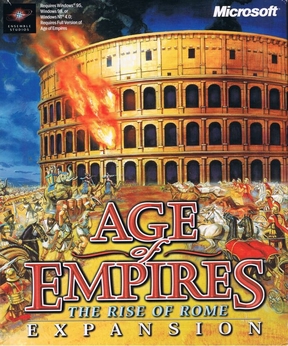
Age of Empires: The Rise of Rome is a 1998 expansion pack for the 1997 real-time strategy video game Age of Empires, developed by Ensemble Studios and published by Microsoft. The expansion adds four new playable civilizations, including the Romans, as well as new units, map types and minor improvements to the game. Development of The Rise of Rome was prompted by delays to the creation of a sequel, Age of Empires II: The Age of Kings, leading to Ensemble Studios creating an expansion to maintain sales of the original game. Upon release, The Rise of Rome was commercially successful and received positive reviews from critics, with praise directed to the expansion's inclusion of features and gameplay mechanics beyond the expected addition of new maps. Reviewers later expressed that the expansion set the standard for the sequel to Age of Empires II, The Conquerors, released in 2000.

Jazz Jackrabbit 2 is a 1998 platform game produced by Epic MegaGames. It was released for Windows, and later for Macintosh. Like the first game, Jazz Jackrabbit, Jazz Jackrabbit 2 is a side-scrolling platform game but features additional multiplayer options, including the ability to play over a LAN or the Internet. The game was re-released on GOG.com along with the first game on November 30, 2017.
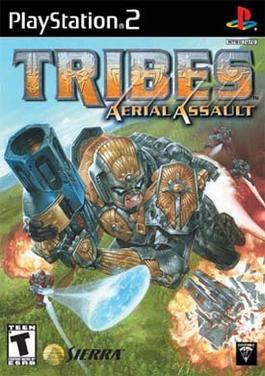
Tribes: Aerial Assault is an online first-person shooter video game released for PlayStation 2 in 2002 by Sierra Entertainment. It was one of the first PlayStation 2 titles designed almost exclusively for online play and was the first online PlayStation 2 shooter that supports both modem and broadband connections. It was announced in tandem with Sony's online strategy for the PlayStation 2 at E3 2001.

Warhammer 40,000: Chaos Gate is a video game set in the gothic science fiction backdrop of the Games Workshop game system Warhammer 40,000. In it, players take command of a number of squads of Ultramarines to do battle with their ancient enemies the Word Bearers Traitor Marines, Chaos Demons, and their commander the Chaos Lord Zymran. A sequel, Warhammer 40,000: Chaos Gate - Daemonhunters, was released in 2022.

Terminal Velocity is a shooter video game originally developed by Terminal Reality and published by 3D Realms for DOS and Windows 95, and MacSoft for Mac OS. It is an arcade-style flight combat game, with simpler game controls and physics than flight simulators. It is known for its fast, high-energy action sequences, compared to flight simulators of the time.

Dominion: Storm Over Gift 3 is a military science fiction real-time strategy video game developed by Ion Storm, published by Eidos Interactive, and released for Microsoft Windows in 1998. The game was originally developed as a spin-off of the mech simulation game G-Nome by 7th Level. Ion Storm acquired both Dominion and its lead designer, Todd Porter, from 7th Level for completion.
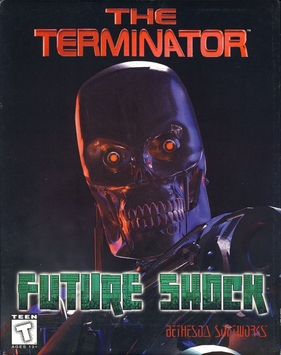
The Terminator: Future Shock is a first-person shooter video game based on The Terminator fictional universes developed and published by Bethesda Softworks in 1995. A sequel, Skynet, was released in 1996.

DemonStar is a video game developed by Mountain King Studios and published in 1998. Considered an unofficial sequel to the studio's earlier Raptor: Call of the Shadows, it is a top-down vertically scrolling shooter set in outer space.

Skynet is a computer game based on the Terminator media franchise. It was intended as an expansion pack for the predecessor The Terminator: Future Shock, but was adapted into a standalone product.

Panzer Commander is a computer tank-driving simulator released in 1998. Developed by Ultimation Inc. and published by Strategic Simulations Inc. (SSI). The game is set in World War II as a tank simulator.

Baldies is a 1995 real-time strategy video game developed by Creative Edge Software and originally published by Atari Corporation for the Atari Jaguar CD. It was later ported to the PC, PlayStation, Sega Saturn, and Macintosh. In the game, the player manages a community of Baldies in order to build structures, increase their population, and create weapons to fight against enemies known as Hairies. There are four classes of Baldies and each structure has specific properties to assist the player. Its gameplay combines strategy with simulation and god game elements. Up to four players can participate in a multiplayer mode via local area network (LAN) on PC.

WarGames: Defcon 1 is a video game for the PlayStation and Microsoft Windows developed by Interactive Studios and co-published by MGM Interactive and Electronic Arts. Although both versions possess the same missions and content, the PlayStation version is a tactical vehicle-shooting game while the PC version is a real-time strategy game. The game is loosely based on the movie WarGames; the story was scripted by John Badham, director of the original film.
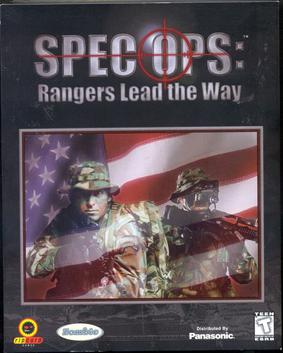
Spec Ops: Rangers Lead The Way is a tactical shooter video game developed by Zombie Studios and published by Ripcord Games exclusively for Windows. Players take control of United States Army Rangers; the game's subtitle is the Ranger motto. It is the first game in the Spec Ops series.
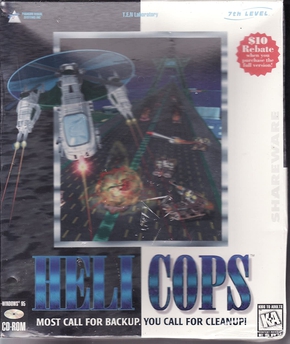
Helicops is a 1997 video game developed by Paragon Visual Systems Inc. and published by 7th Level for Windows.
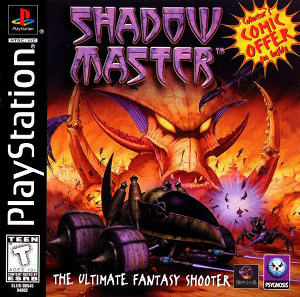
Shadow Master is a video game developed by HammerHead and published by Psygnosis for the PlayStation and Microsoft Windows. It is a first-person shooter in which the player character rides in an armed vehicle. It met with predominantly negative reviews which praised its visuals but criticized it for clunky controls and poorly designed, frustrating gameplay.

Game, Net & Match! is a video game developed by German studio Media Games and published by Blue Byte for Windows in 1998.

Jetfighter: Full Burn is a combat flight simulator video game developed by Mission Studios and published by Interplay Entertainment for MS-DOS in 1998.
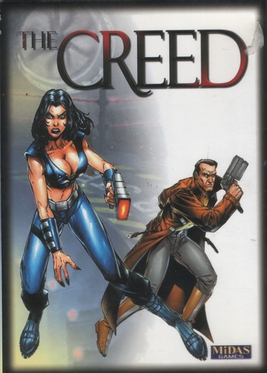
The Creed is a 1999 action-adventure game created by Australian developers Insomnia Entertainment and Dreamtime Interactive, and published by Electronic Arts and Midas Interactive. The game is a cyberpunk-themed action-adventure game set in a partial open world, allowing players to complete open-ended missions for the game's various factions. Upon a limited release in the Asia-Pacific, The Creed received praise from Australian publications for its atmosphere and environmental design.




















